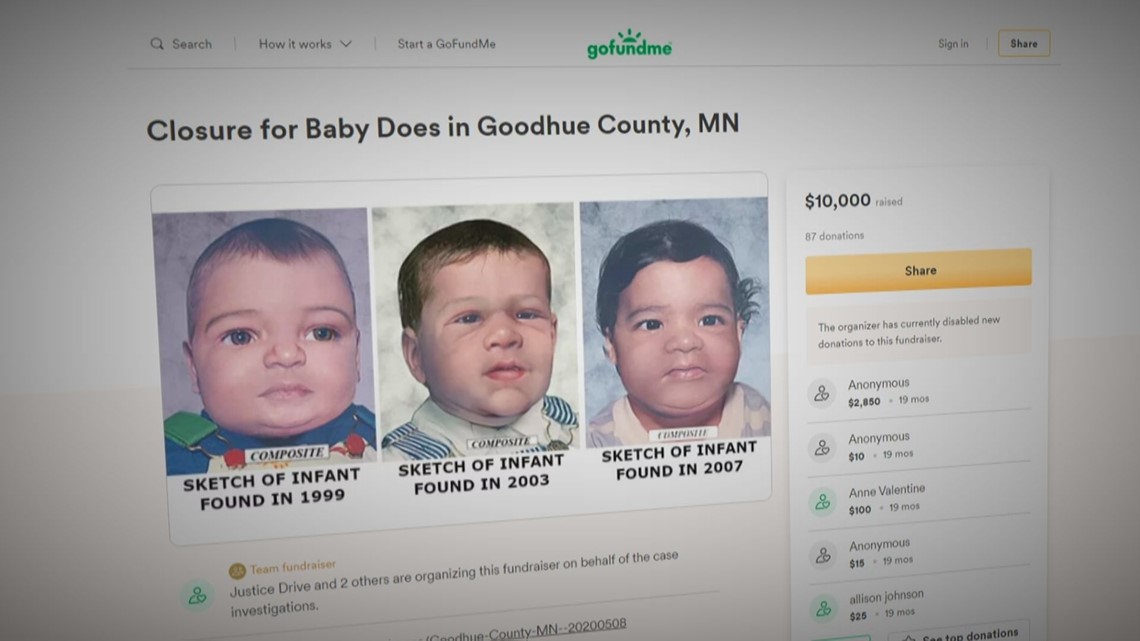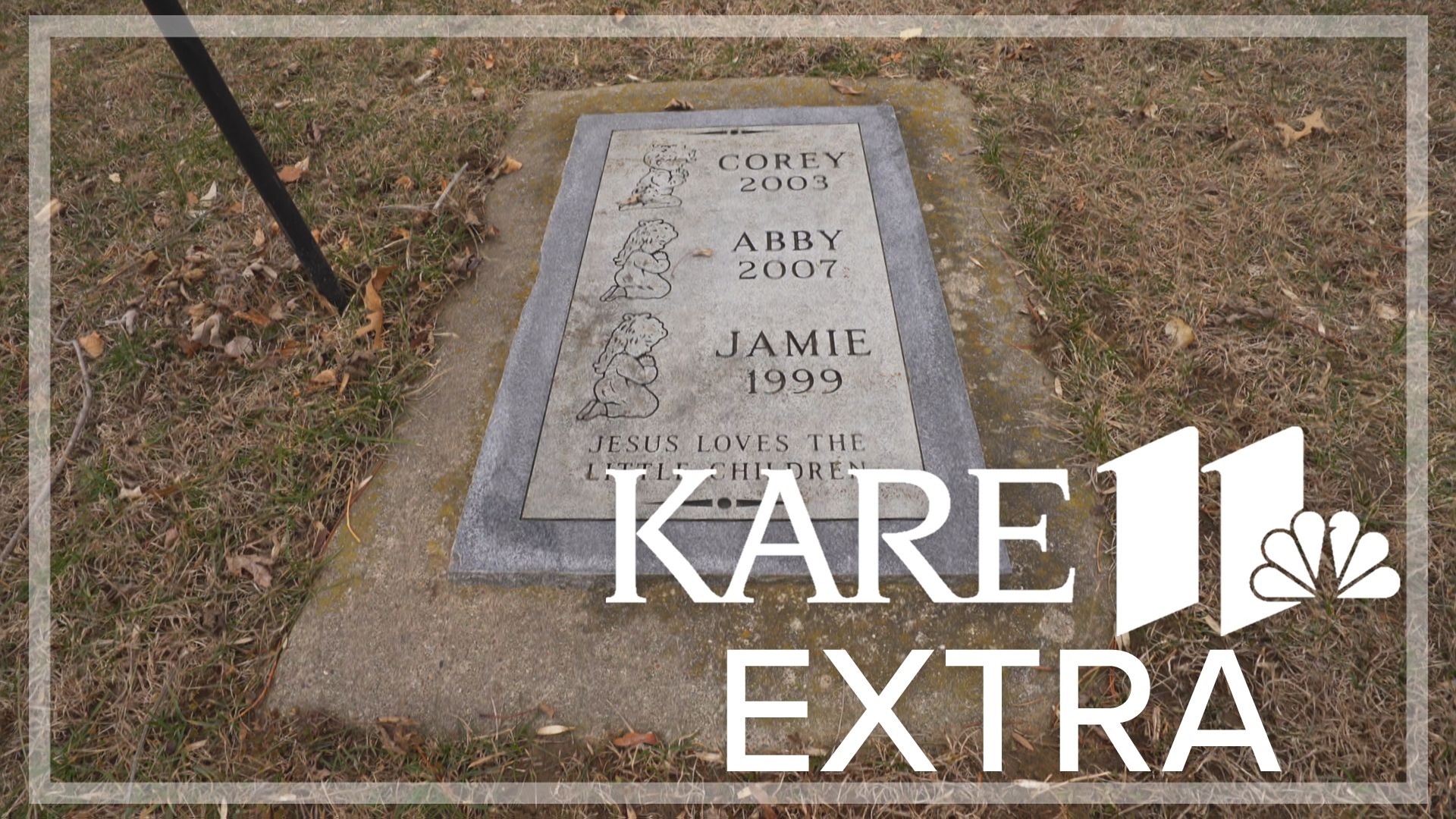ST PAUL, Minn. — A mystery that has haunted investigators in southeast Minnesota could be closer to being solved, thanks to a new investigative technique involving DNA evidence that is now being used across the country.
The victims in the "babies in the water" case in Red Wing are three infants found in the Mississippi River over an eight-year span.
Over the last three decades, Jeanne Madtson has spent a lot of time at the Oakwood Cemetery in Red Wing visiting her daughter Ann Marie.
"She was stillborn at 32 weeks. Our only child," Madtson said.
Jeanne also visits the graves of three other babies — Jamie, Corey and Abby.
"They're special," she said while wiping away tears.
Those three babies were found shortly after birth in the waters of the Mississippi in and around Red Wing during an eight-year span starting in 1999.
"People that have children should always remember, they're a gift from God," Madtson said.
The mystery of the babies in the water started when two high school seniors found an infant girl wrapped in a towel. Investigators released a composite sketch of the baby, Jamie. Four years later in 2003, on a Lake Pepin beach, someone found the body of a newborn boy, Corey. Another four years later in 2007 in the marina at Treasure Island Casino, a third baby's body, Abby, was found in the water.
Jeanne was shocked each time.
"I mean, there are so many people who want children that can't have children who probably would have taken those kids in a heartbeat, with no questions asked," Madtson said.
So she and her husband organized funerals and donated the burial plot.
"I don't want her to be alone, simple as that," Madtson said in 1999.
Jeanne and her husband named the three babies — giving them an identity and, in death, a family.
"Because I didn't want Jamie, Corey, or Abby buried where they'd be forgotten," she said.
But the question still remains — why these babies weren't given a chance at life?
"I think that's what everyone wants to know, is 'Why?'" Madtson said.
For a long time it looked like we might never learn "why," but new investigative techniques using DNA are giving new hope to possibly solving this case.
"Boy, it's been on most of our minds for 22 years," said Goodhue County Sheriff Marty Kelly.
Kelly was heartened when, in 2020, the community raised $10,000 in two days to hire Parabon Nanolabs, a company specializing in genetic genealogy that says they've helped solve 200 cases across the country in just the last four years.
Parabon tries to identify a subject by plugging DNA samples into public ancestry databases — similar to what you might do to find relatives on sites like Ancestry.com and 23andMe.


Once Parabon has determined potential relatives, their genealogists begin building family trees, researching and eventually giving names of potential suspects to police.
In this case, they're using the babies' DNA to hopefully narrow down to the parents and give investigators the leads they need to make an arrest.
Sheriff Kelly can't say how close they are, but he says there were crimes committed and they want to hold someone responsible.
"There's a lot of hope there that they can start reaching deeper into family trees and so on to finally come to a resolution,"
Sheriff Kelly says they've known for awhile the first two babies — Jamie and Corey — had the same mom. Abby is unrelated.
While Jeanne can't relate with the choices the perpetrators made, she still hopes they will come forward.
"There's got to be a reason, why you did what you did. You can get help for that," Madtson said. "The only thing I regret is not being able to hold Abby, Corey and say, you know, you're loved."

